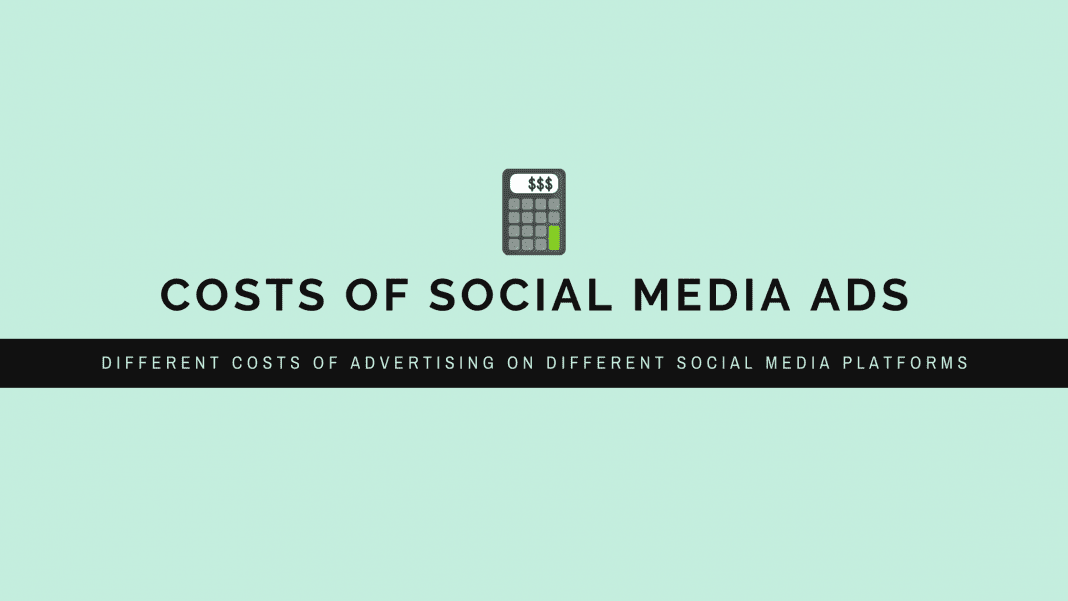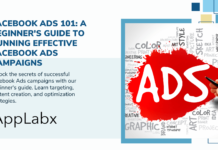Social media marketing includes both unpaid and paid marketing. Unpaid marketing is usually what we start off with, such as creating and posting content frequently to engage our customers. However, when you feel like your content might not be getting the enough reach that it deserves or you would like to expand your business, you can turn your free content into paid content. This essentially means you start to advertise on the respective platforms. Almost all social media platforms have put in place advertisements for businesses like you to make full use of. Their systems are generally similar across all platforms. In this post, I will be showing the different costs of advertising on the different social media platforms, namely Facebook, Twitter, Instagram and TikTok.
An important thing to note about the costs of ads on social media platforms is that it does not have an absolute value. Everyone’s cost will vary and it changes with your budget, audience, competitors, time of the year and more.
It is also worthy to highlight that the pricing system for all of the abovementioned social media platforms is similar. They are all based on a bidding system. This means that the cost of your ads is dependent on how much you are willing to put in. Why a bidding system? There are many brands out there like you who want a spot on the social media platform and bidding is used to counter this excess demand.
Moving on to the different costs of advertising on the different social media platforms:
1. Facebook and Instagram
For both Facebook and Instagram, these are the following bidding models
- Cost-per-click (CPC)
- Cost-per-thousand-impressions (CPM)
- Cost-per-like
- Cost-per-download
As mentioned earlier, there are no fixed costs for your Facebook ads as it depends on different factors. One of the main factors is your ad budget. Before you launch your campaign, you will be required to decide how much you would like to put inside. Logically, your budget determines how much you are paying for your ads. Another important factor is timing and competition. There are certain peak periods throughout the year that have more demand for ad positions. The cost will increase due to the increased competition.
Based on an article by WebFX, the cost is around $0.97 per click if CPC is used. On the other hand, the cost is around $7.99 per thousand impression under the CPM model.
2. Twitter
Cost of ads on Twitter is also dependent on various factors. However, there is no minimum budget required for your ads. Hence, it depends on how much you are willing to put in. You can also choose the period of your campaign like other social media platforms.
According to WebFX, promoted tweets cost about $0.50 to $2.00 per action taken while promoted accounts cost $2 to $4 for each follow. Also, promoted trends cost about $200,000 per day.
3. TikTok
TikTok ads are generally more expensive than other social media platforms. Like Facebook and Instagram, there are two budget options- daily and lifetime. The minimum budget for campaign is $500 and $50 for ad group level. There are 4 bidding models, which are relatively similar to that of Facebook and Instagram too.
- Cost per click (CPC)
- Optimised Cost per Click (oCPC)
- Cost per Mille/Thousand Impressions (CPM)
- Cost per Thousand views (CPV)
As the ads on the platform are relatively new, there are not many statistics on how much it costs to advertise. However, there are some data shared on platforms and websites. For a hashtag challenge ad on TikTok, a flat fee of $150,000 is required for the first 6 days of the campaign with an extra $200,000 to promote the challenge. People who have advertised on TikTok also suggested that a budget of at least $1000 should be set aside for your simple campaign and on top of that, be prepared to pay more than that ($50,000 to $100,000). To find out more about the types of ads offered on TikTok, check out this article!
There you have it, the different costs of advertising on the different social media platforms. The costs are generally not fixed. Hence, it is important for you to determine which form of ads will best suit your objective and what you want your ads to do for your company. With that, it would be easier for you to determine what is the best amount of budget to put into your ads.



































